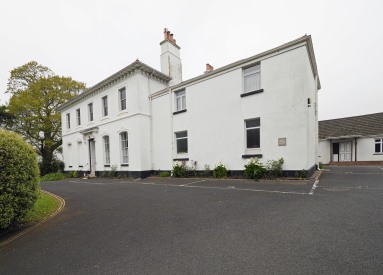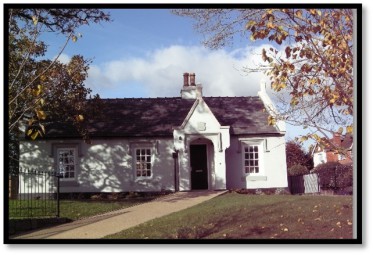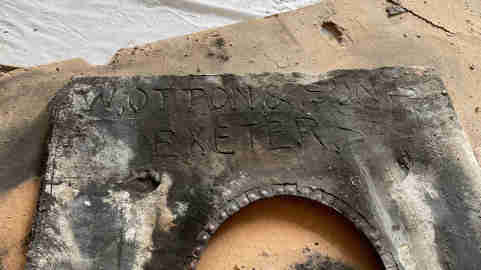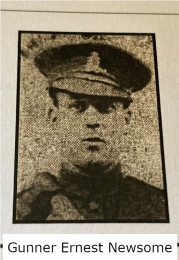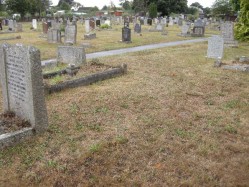
The Strange Death of Thomas S. Kimber
An article by Robert Wilkins, along with Sue Jackson's findings
In April 1890, Thomas S. Kimber, a 29-year-old Englishman from Exeter, arrived in Montreal after sailing aboard the S.S. Sarnia. Described as a gentleman and well-off, Kimber made friends quickly and lodged at the Grand Central Hotel with three fellow travelers. On the morning of April 11, he was last seen leaving the hotel with his coat collar turned up. He never returned, and 47 days after his disappearance, Kimber's decomposed body was found in the McTavish Reservoir. Kimber's tragic case remains unsolved, his death an enduring Victorian mystery involving questionable police conduct and social scandal.
Robert Wilkins, a historian of Montreal, was fascinated by this mystery and conducted his own investigation. You can read Robert's article with his account of the Thomas Kimber mystery here. The official version of this article will appear in the Autumn 2025 edition of the publication of the Quebec Anglophone Heritage Network.
As part of his research, in June 2025, he contacted the Society to learn more about Thomas Kimber's Exeter roots. Sue Jackson's findings about Thomas Kimber's family in Exeter can be found here.
To learn more about Robert Wilkins' research, please visit his website at rnwilkins.wordpress.com. If you would like to get in touch with Robert, you can reach him at robertnwilkins@yahoo.ca.
A Search for a House
by Sue Jackson
Members of Exeter Local History Society were able to have a guided tour of Thomas Hall, formerly known as Great Duryard House (and in more recent years a University of Exeter hall of residence) on 30 May 2014 just as it had been purchased by the Steiner Academy and before any renovation had taken place. A re-visit was eagerly awaited and this took place on Saturday 12 September 2015 at the start of the Academy’s new academic year. On our first visit the Surveyor showed us over the severely decayed main house with warnings to be very careful for our own safety. On our second visit, the occasion of the Academy’s Open Day, we were able to see the site’s complete transformation with its very impressive new school buildings and the old house completely and sympathetically cleaned up and restored.
Click here to read the full story
The Forgotten Tenant of Fairfield House
by Steve Errington with foreword by Sue Jackson
On Wednesday, 6 November 2024, Exeter Local History Society's email received a research enquiry from Dr Steve Errington, Immediate Past President of Royal Western Australia Historical Society. He said he was “preparing a talk on Captain James Mangles RN who visited Western Australia in 1831 on a wildflower-collecting expedition. He retired to live in Topsham and died there in 1867. [Confirmed as December Quarter 1867, Age 81] He had found James Mangles in the 1851 Census living in Fairfield Lodge and in the 1861 Census living in Fairfield House. He was seeking information on these two buildings and any available images or photos.
Click here to read the full story
WALTER OTTON & SONS
by Sue Jackson
As members will be aware from earlier Newsletters, the Society email receives queries from the general public and Frances forwards these to me to see if I can help. An interesting one received was from someone renovating a 1920s semi in Birchy Barton Hill where the cladding was removed to reveal a fire surround bearing the name of the maker as W.Otton & Sons which included photos as evidence and asking if anything was known of the history of the firm and its employees.
Click here to read the full story
GUNNER ERNEST NEWSOME
by Sue Jackson
At the beginning of September 2022 another research query was received by Frances and forwarded to me. It was from Tony Dunlop, a not-for-profit local history researcher in West Yorkshire, mainly in the Batley, Dewsbury and Morley areas. His current research concerned a story of a WWI Dewsbury casualty, the end result being a “Little Book” aiming for donations for this year’s Poppy Appeal. The subject in question was Gunner Ernest Newsome who lost his life following the sinking of ‘The Osmanieh’ on 31 December 1917.
Click here to read the full story
Tom Stanier's Query
by Sue Jackson
An interesting enquiry received recently was from a Tom Stanier asking for help in locating the grave of his grandfather Charles Edward Stanier who he knew was buried in Topsham Cemetery in 1936. Sue already knew that burial index cards were on-line for Higher, Exwick and Topsham Cemeteries so it was a case of searching for the record. [Many years ago, these were housed in card index drawers and it was necessary to visit the Civic Centre and undertake a manual search.]
Click here to read the full story
EXETER'S POST WAR HISTORY:
A PERSONAL VIEW FROM A FOUNDER MEMBER ON OUR NEWSLETTER`S 100TH ANNIVERSARY
by Robert Crawley
Born in 1945 meant that the first impressions I had of Exeter as my home town was of streets around the centre being largely devoid of any buildings. “Waste ground” my parents would say, not wishing to explain the episodes of war that had caused such dereliction. These bombed sites had been adopted as unofficial car parks, not that many people had cars in those days, so traffic jams were yet to come.
Click here to read the full story
Click here to see the materials about World War II installations in Exeter

